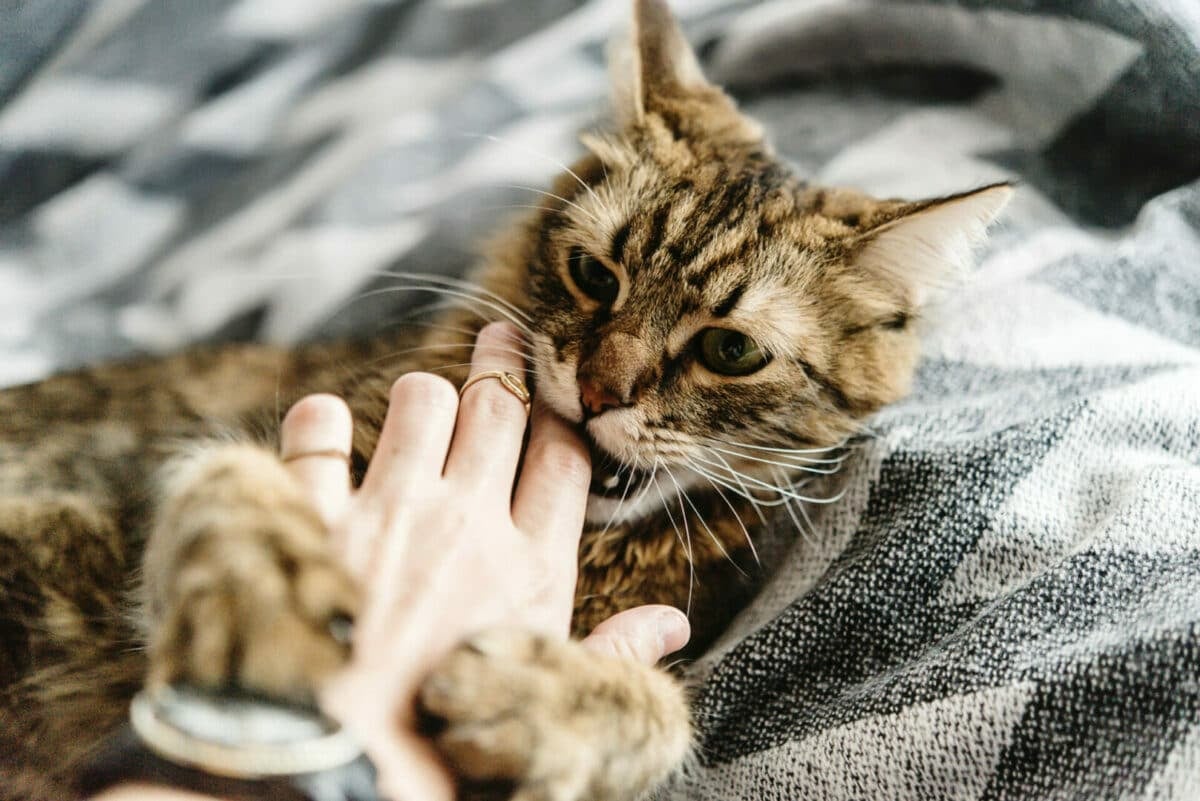My vision of an ideal evening is sitting on my comfy overstuffed chair with my cat curled into my lap. In a perfect world, he would purr up a storm and wouldn’t mind when I lifted my arm to sip my hot tea or turn the pages of my book. My reality, however, is a little different. Instead of curling up for a good snuggle session, my cat prefers to attack my moving toes and swat at my hair. He’d much rather climb the furniture and torment the dog than lay down in my lap. It’s safe to say that my cat is not a lap cat.
While a lot of our feline friends love to spend their cat naps curled up with their humans, not every cat is the same. Some cats simply aren’t lap cats. Here are a few reasons why.
Age is a Factor
At less than six months old, my cat has more energy than he knows what to do with. He only recently worked up the courage to walk down the stairs, and now he’s all about exploring, playing, and stalking the dogs. He sprints down the hallway, makes an obstacle course out of my office, and attacks my ankles every chance he gets. One thing he doesn’t seem to have time for is sitting still.
A lot of younger cats aren’t interested in lazy cuddles with humans. They want to play and explore, and being a lap cat isn’t conducive to their playful personalities. As they age, there’s a chance that will change. Mature adult cats are more likely to be lap cats than spunky kittens. They still like to play, but they’re also slowing down. They’ll be happy to keep your lap warm while kittens are too busy being kittens to sit still.
Trust is Important
The cat you’ve had for years is more likely to curl into your lap than a stray you recently rescued. Think about it, you wouldn’t fall asleep next to someone you just met. You have to be perfectly comfortable in that person’s company to feel safe enough to close your eyes and drift to sleep.
Falling asleep leaves cats vulnerable. Their natural survival instinct drives them to protect themselves at all times, and that includes when they’re asleep. If they don’t trust someone with their life, they’re unlikely to fall asleep in their lap. They need to know that no matter what, they’re safe in your arms. Earning a cat’s trust can take time and effort. If you work your way to being a trustworthy person in their life, they might eventually decide that being a lap cat is isn’t so bad.
Every Personality is Unique
Cats have a lot of things in common, but no two are the same. Every cat has its own personality that makes it perfectly unique. And while a lot of kitties love jumping in to laps and falling asleep to head scratches and gentle pets, that isn’t the case for all our feline friends. Some prefer to show their love through the occasional leg rub and head bump. The intimate proximity of being a lap cat makes them uncomfortable. Meanwhile, they might enjoy other types of interactions like playing or quick scratch sessions.
It’s always important to respect your cat’s unique wants and needs. You can’t force them to change their personality (this will actually hurt your bond). There’s no use in pinning your cat down and forcing them to stay in your lap. Remember that your cat is an individual, and those personality quirks are exactly why you love them.
You can’t force your cat to be a lap cat, but there are subtle things you can do to encourage a good cuddle session. Try sitting down with your cat’s favorite blanket or pillow. You could also use treats to show them that your lap is a great place to be. The best thing you can do if you want your cat to be a lap cat is continually show them love in their own language. The better you and your cat understand each other, the better your bond will be.






